1 Derailed Train
Note of Caution: This activity contains details that some learners may find disturbing, making it difficult for them to engage with the content. Share a preview of the content before engaging in the activity.
| Level | Materials |
| B1 and up | Set of cards (at the end of this chapter)
Set of picture cards (at the end of this chapter) A copy of train crash picture (at the end of this chapter) 2 flipchart paper sheets Markers 1 or 2 dice for the teacher Note: Check the Introduction to Role-Playing Adventures for instructions on how to use the dice, how to integrate writing into the RPA, and how to adapt the RPA to different size classes. |
Storyline: In this RPA, the class will need to help rescue and treat passengers from a derailed train. They will also help police catch the criminal that caused the accident.
| # | Task | Suggested Time |
| 1. | Optional: Ask students to create a second identity (see Introduction to Role-Playing Adventures for instructions). If your students already have a second identity, you may choose to use them for this adventure.
Tell students they will participate in a new adventure. Place the picture cards around the room and tell them they can take one (or more, depending on the size of your group) of the objects displayed. After having chosen their tool(s), students describe their tool(s) and explain what they could be used for. Encourage students to think outside the box. For example, if they chose the diapers, they might come up with the following ideas: for a baby, to dry up some place, to collect rain water, to use as bandage, etc.
|
20 – 30 minutes depending on the level of the students, size of the class, and previous knowledge of the vocabulary. |
| 2. | Tell the class they are on a high-speed train, travelling across the countryside.
Say: What does it look like inside the train? Are you in the first or economy class? What kind of landscape can you see from inside the train? As students answer, invite them to take turns drawing the landscape on the white board.
|
10 – 15 minutes depending on the level of the students, size of the class, and previous knowledge of the vocabulary. |
| 3. | Place students in groups and ask them to draw a layout of the train. Ask the groups to present their layout.
The whole class chooses the layout they like the best.
|
20 – 30 minutes depending on the level of the students, size of the class, and previous knowledge of the vocabulary. |
| 4. | Tell the students they are in the last car.
Say: You see someone who looks very strange and is acting very suspiciously. What does he/she look like? What is he/she doing? Why does he/she look suspicious? As a whole group, have students describe him/her, what he/she was wearing, and ask whether they noticed any special features, such as a scar or a tattoo. Write key words on the board as students contribute their ideas. At the end of the task, you (or a student) summarize the ideas. You may also assign this as a writing activity. Note: Students will need to remember this description towards the end of this RPA. It might be a good idea for the teacher to keep notes on the person’s appearance.
|
15 – 20 minutes depending on the level of the students, size of the class, and previous knowledge of the vocabulary. |
| 5. | Tell the class the suspicious-looking person has gotten up and left the car you are in.
Say: It is 9 a.m. What are you doing now? Ask students to tell you exactly where they are in the car and what they are doing (sleeping, looking out the window, drinking some tea, etc.).
|
5 – 15 minutes depending on the level of the students, size of the class, and previous knowledge of the vocabulary. |
| 6. | Say: Suddenly, you hear a loud screech and a really loud noise! The train starts bumping like crazy! After what feels like a minute, there is absolute silence. You look around and notice that fortunately nobody seems to be hurt.
Ask students to describe their reactions to the event and what happened to them (for example, I fell down, I started screaming, my tea spilled all over my clothes…).
|
10 – 15 minutes depending on the level of the students, size of the class, and previous knowledge of the vocabulary. |
| 7. | Say: When the train stops, you look around. You are all safe. You are the only ones in the car. You try to get out, but the doors are stuck. You look out and you see water! There is water coming in from all sides! You need to get out as quickly as you can, or you will all die! How are you going to manage to get out? Which tools can you use? Is there any emergency exit?
Ask the class to suggest a plan. If you have a large group, place students in groups and ask each group to come up with a plan. If you have groups, have all groups present their plan. Tell students that you are going to check first if the plans have any chance of being successful. As they suggest their plans, roll the dice. If the number obtained is not satisfactory, tell them that the plan is not good enough. Start with very low odds. As they improve their plans, improve the odds. For example, if students say they are going to use the crowbar to open the door, tell them that the plan will only be successful if they get a 6. If they don’t get a 6, ask them to improve their plan by adding something else or by using the plan from another group (we will break a window), and throw the dice again. If they get 5 or 6, their plan will be successful. And so on. If needed, you may give the following tip: look up, is there any hatch on the roof? My personal experience: In one of my groups, nothing worked, until someone said they would throw a banana at the window pane, and it was successful. It doesn’t matter if the solution is silly.
|
30 – 45 minutes depending on the level of the students, size of the class, and previous knowledge of the vocabulary. |
| 8. | When the students have a successful plan, challenge them by saying:
As soon as you open the door or break the windows, water will gush in. How can you make sure you don’t get thrown back in by the force of the water? And how can you make sure everyone will get out? The students will eventually be successful on this task. When they finally get out of the train, they will see that the train has derailed and they were in the last car which fell into a shallow lake. The very first one is hanging off a very high cliff and a fire is breaking out. Show them the picture of the scene. Tell them they can hear people screaming for help. If you have a large class, place students in groups and assign the following tasks (give them 5 minutes to complete their task). If you have a small group or are working one-to-one, work on each part before going to the next. (*) Fill in the space in the cards below with the number of passengers that need to be rescued. As students come up with their plans, roll the dice to see if they are successful. If not, they have to come up with a different plan. And the clock is ticking! |
30 – 50 minutes depending on the level of the students, size of the class, and previous knowledge of the vocabulary. |
| # | Task | Suggested Time |
| 9. | Once they have taken everyone out of the train car, go over the injuries the passengers have.
What sort of injuries have they got? Divide the class into groups and give each group a blank sheet of paper. Tell them they will play a little game. The winning team will get one of the pictures that were not picked in the beginning of the game. Give each group dictionaries or tablets or ask them to use their cell phones. Tell them they have 5 minutes to come up with as many different injuries caused by accidents as possible. When time is up, ask the groups to name the injuries they came up with and write them on the board. Check students’ understanding of the items on the board and appoint the winning team: the one that came up with the biggest list of injuries wins. When they finish, the winning team gets to pick an extra tool. Ask the rest of the class to give suggestions as to which picture they could choose (I think you should take the _____ because_____). When the winning team decides what to take, make sure they explain the reason behind their choice (We decided to take ____ because ______). |
15 – 20 minutes depending on the level of the students, size of the class, and previous knowledge of the vocabulary. |
| 10. | Write the complete list of injuries on cards and ask students to classify them into “severe”, “serious”, or “minor”. Divide the class into groups.
Tell each group how many passengers they will need to care for by rolling the dice. Each group will end up with a different number of injured passengers to care for. Place the cards in three piles according to the categories (“severe”, “serious”, or “minor”). Each group (or individual students if you have a small class) then rolls the dice – once for each of their injured “patients”. If s/he gets 1, 2, they get a “minor injury” card. If they get 3 or 4, a “serious” card. A 5 or 6 indicates a “severe” case. They should get as many cards as the number of passengers. Groups then report on their passengers’ injuries and what they intend to do. Again, roll the dice to see if their procedures are successful. If not, tell them the patient had a turn for the worse! They will need to go to the pile of “severe” injuries and get another card. This is a good opportunity to teach them some basic first aid procedures. You could show them videos on first-aid care, or you could invite a health professional to make a lecture.
|
60 – 80 minutes depending on the level of the students, size of the class, and previous knowledge of the vocabulary. |
| 11. | Tell students that police have arrived. Ask students to describe the suspicious-looking person to the police (you may play the role of the police officer or invite a student to do it).
Use the notes you kept from task # 4 to check whether the students were able to remember all the details about the suspect.
|
10 – 15 minutes depending on the level of the students, size of the class, and previous knowledge of the vocabulary. |
| 12. | Tell the class they have a new objective now – to help the officers locate the suspect.
Get the picture of the scene (with the train) and post it in the middle of the white board (or flipchart paper). Take some markers and have students take turns drawing around the central picture. What can they see around the scene? An abandoned house? A forest? Some mountains? A village? A river? As they take turns drawing, students describe the items they have included. For example, “this is a small forest”, “this is a farm house located in the valley”, ” this is village about 5 km away”. Note: You will use the map they have created for the final tasks. If you used the white board, it might be a good idea to take a picture of the map.
|
30 – 40 minutes depending on the level of the students, size of the class, and previous knowledge of the vocabulary. |
| 13. | Tell the class that they are going to look for the suspect.
Ask them to look at the map they have created and choose a place to go first. As they suggest different places, roll the dice to see whether the suspect is in that place or not. When they finally locate the suspect, work with the whole class to get some extra details. Where exactly is he/she? What exactly is he/she doing? Divide the class into groups and have each group come up with a plan to catch the suspect. Tell them that he/she might be armed and dangerous. Have each group describe their plan and ask the class to decide which to try first. Roll the dice telling them what their odds are and if they are not successful, try the next plan, improving the odds as you go.
|
20 – 40 minutes depending on the level of the students, size of the class, and previous knowledge of the vocabulary. |
| 14. | Say something like: You caught the criminal! You are fantastic! Hand him/her over to the police.
Place the students in small groups and ask them to come up with a story explaining why the criminal caused the train accident. Ask each group to tell their story to the class. After all stories have been told, ask the class to choose the most creative story. Optional: If you have an advanced group, you may even go on to have a trial (with a prosecutor, a defense lawyer, a judge, the jury, etc.). |
50 – 60 minutes depending on the level of the students, size of the class, and previous knowledge of the vocabulary. |
Cards, Pictures, and illustrations (Photocopiable)
Cards
| Group 1: How are you going to put out the fire? What’s your plan B in case it doesn’t work?
|
| Group 2: You need to prevent the first carriage from falling off the cliff. What are you going to do? Can you come up with at least two suggestions?
|
| Group 3: There are __ passengers in the first train car. They seem to be hurt. How are you going to get them out as fast as possible? Remember: the car might fall off the cliff at any moment!
|
| Group 4: The second train car seems to be empty. But there are __ passengers in the third car. They are trapped inside. One of them is stuck under some heavy metal structures. You will need to cut through the metal to get to him/her.
|
Picture Cards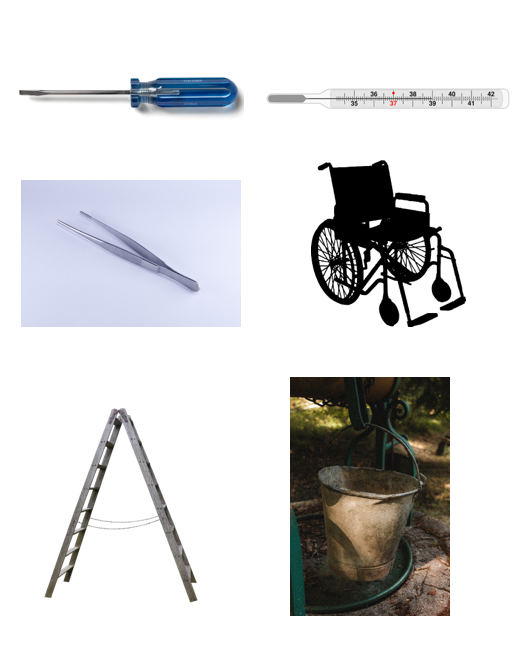
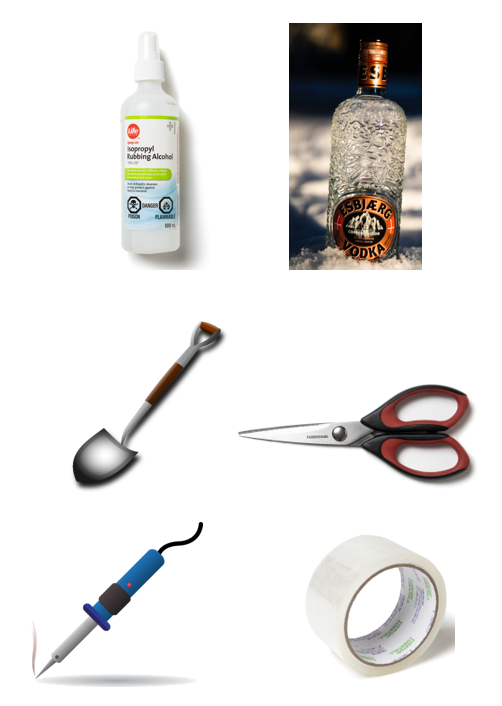
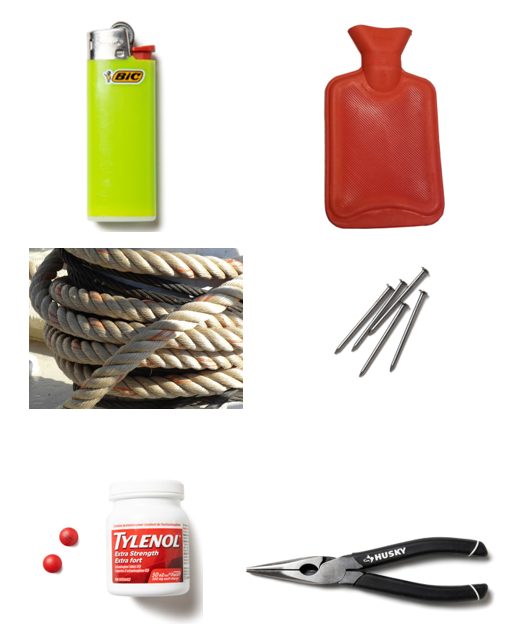
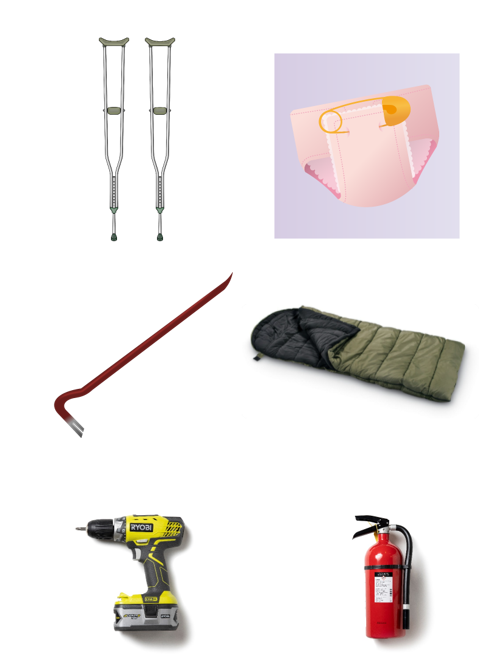
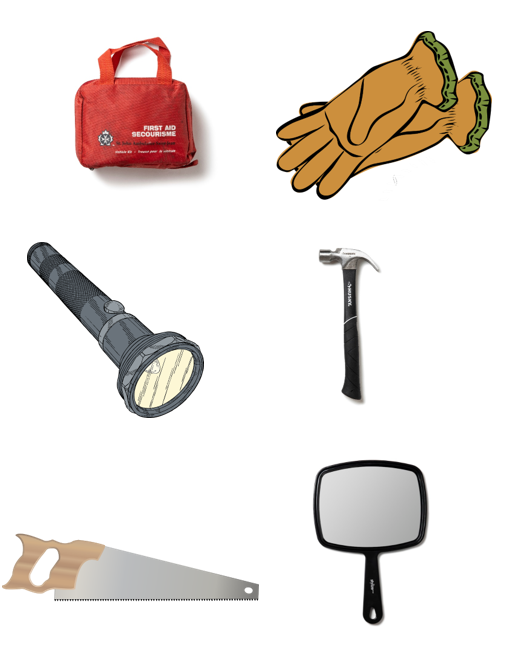
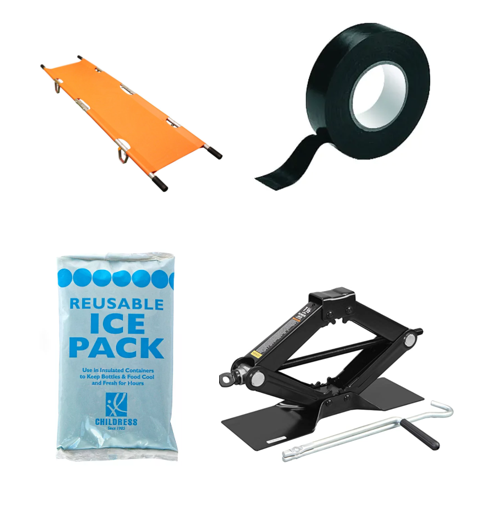
————————————————————————————————–
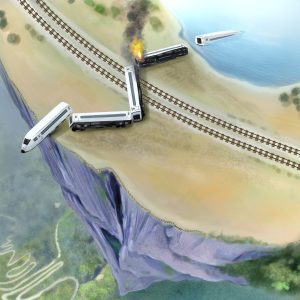


Feedback/Errata